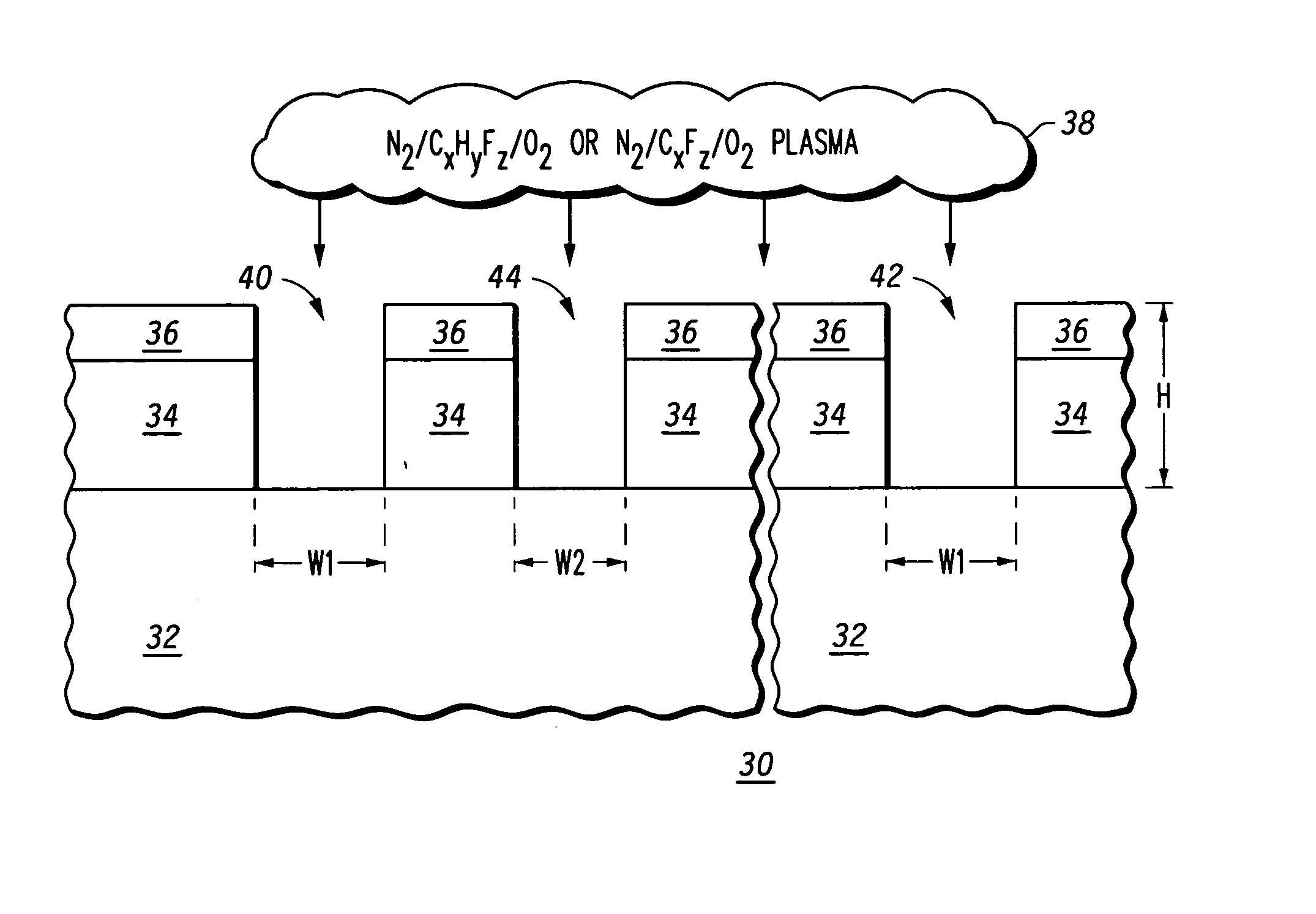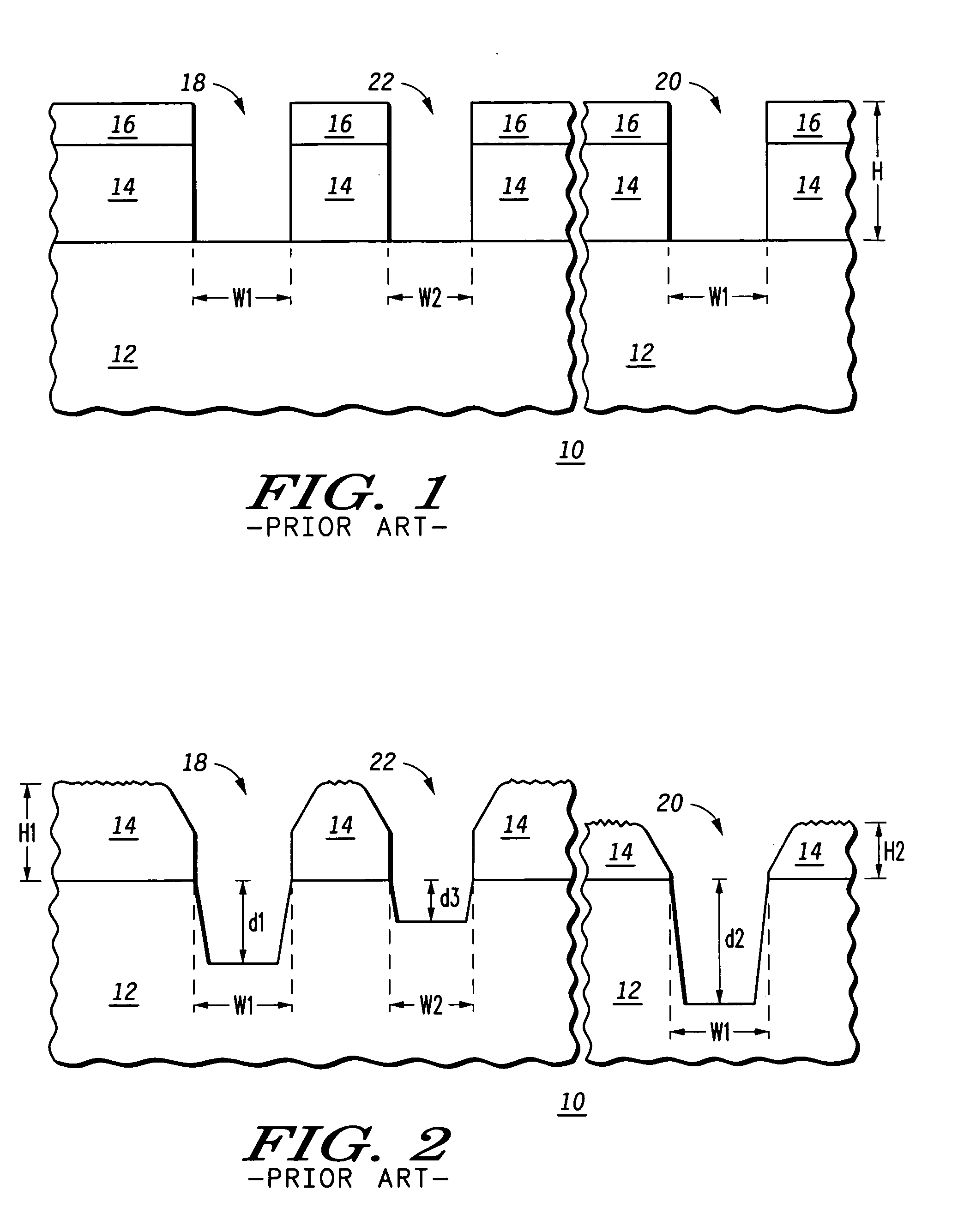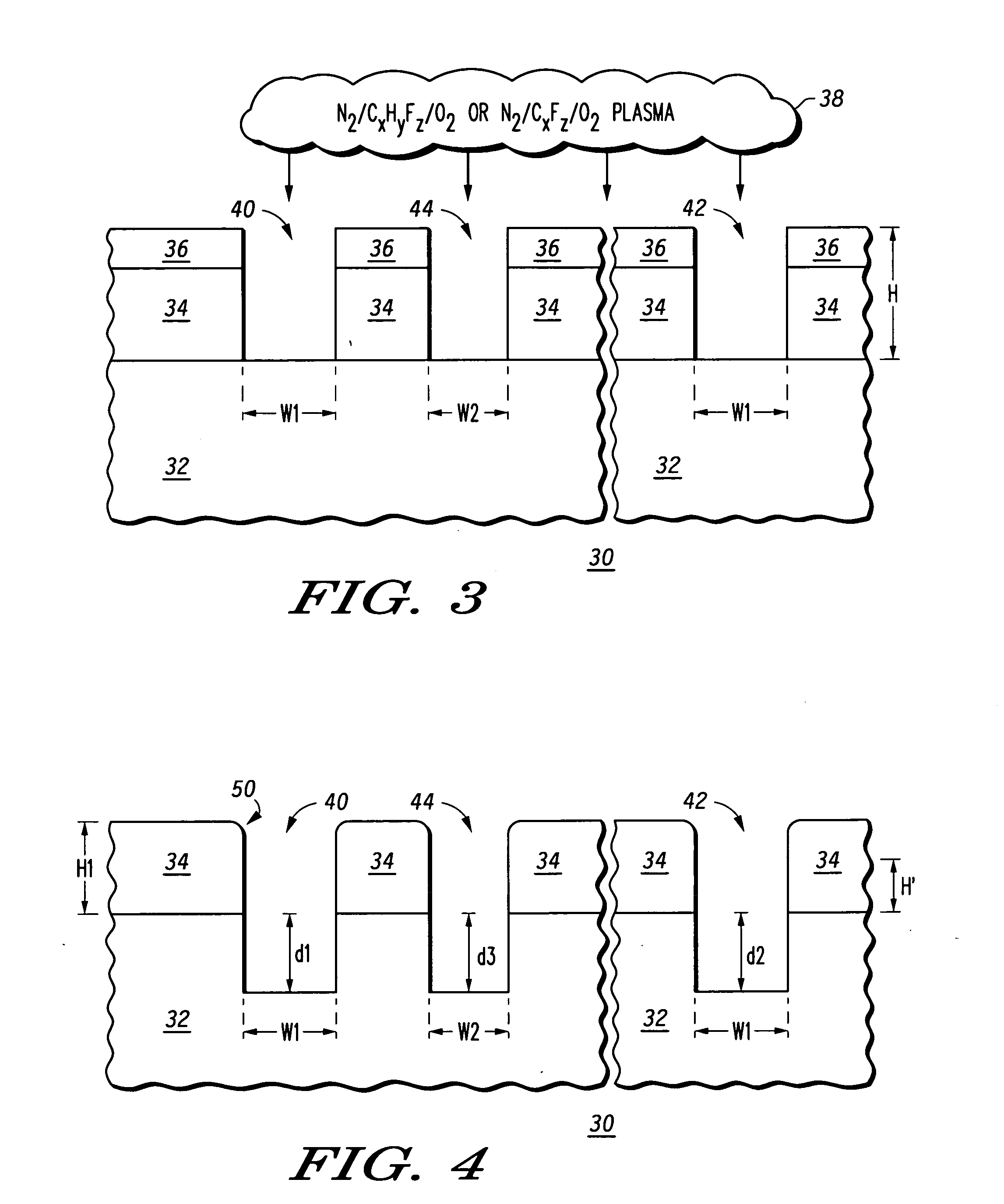Method for etching a quartz layer in a photoresistless semiconductor mask
a technology of photoresistless semiconductor and quartz layer, which is applied in the field of integrated circuits, can solve the problems of reducing the feature contrast during subsequent semiconductor wafer fabrication, difficult to precisely control the etching depth of quartz layer, and etching applied to cpl
- Summary
- Abstract
- Description
- Claims
- Application Information
AI Technical Summary
Problems solved by technology
Method used
Image
Examples
Embodiment Construction
[0011] Illustrated in FIG. 1 is a cross-section of a known mask 10. A quartz substrate 12 has formed thereon a chrome (Cr) layer 14. Overlying the chrome layer 14 is a chrome oxynitride (CrOxNy) layer 16. Openings 18 and 20 having a width W1 have been etched into the mask 10 using a halogen based plasma (e.g. chlorine based). The openings 18 and 20 are in separate areas of the mask 10 as noted by the break in mask 10. Additionally shown is an opening 22 having a width W2 that is less than W1. Because chrome layer 14 and the CrOxNy layer 16 are thin, the sidewalls of the opening are substantially vertical. Additionally, halogen based metal etching plasmas are not highly polymerizing and are mainly ion driven. Therefore, there is a thin passivation layer (not illustrated) on the sidewalls that do not inhibit ion etching. As used herein, the term “quartz” is fused quartz that is crystal quartz that is melted at a white heat and cooled to form an amorphous glass. It is not birefringemen...
PUM
| Property | Measurement | Unit |
|---|---|---|
| Fraction | aaaaa | aaaaa |
| Fraction | aaaaa | aaaaa |
| Fraction | aaaaa | aaaaa |
Abstract
Description
Claims
Application Information
 Login to View More
Login to View More - R&D
- Intellectual Property
- Life Sciences
- Materials
- Tech Scout
- Unparalleled Data Quality
- Higher Quality Content
- 60% Fewer Hallucinations
Browse by: Latest US Patents, China's latest patents, Technical Efficacy Thesaurus, Application Domain, Technology Topic, Popular Technical Reports.
© 2025 PatSnap. All rights reserved.Legal|Privacy policy|Modern Slavery Act Transparency Statement|Sitemap|About US| Contact US: help@patsnap.com



